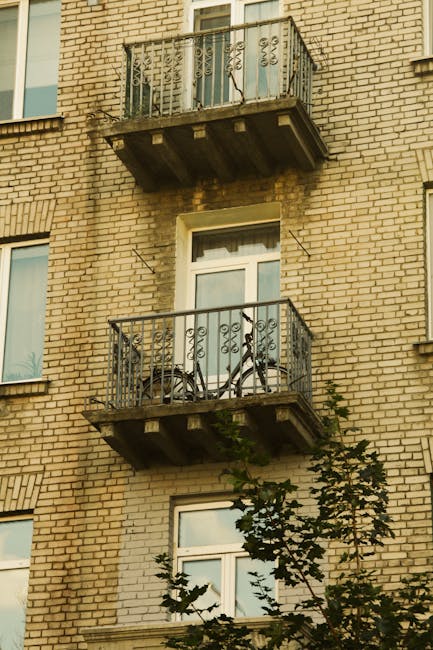and Safety in Outdoor Living Areas
Introduction
Outdoor living areas are increasingly popular extensions of our homes, providing spaces for relaxation, entertainment, and connection with nature. However, creating a safe and enjoyable outdoor environment requires careful planning and attention to detail. This article explores key safety considerations and design elements for outdoor living spaces, ensuring a secure and pleasant experience for everyone.
Fire Safety in Outdoor Spaces
Fire Pits and Fireplaces: Safe Operation
Fire pits and fireplaces add warmth and ambiance, but require responsible operation:
- Placement: Locate fire features at least 10 feet away from structures, trees, and flammable materials.
- Fuel: Use only the fuel specified by the manufacturer (e.g., wood, propane, natural gas).
- Supervision: Never leave a fire unattended, and keep a fire extinguisher or water source nearby.
- Wind Conditions: Avoid using fire pits on windy days to prevent embers from spreading.
- Spark Arrestors: Install spark arrestors on wood-burning fire pits and fireplaces.
Grilling Safety: Preventing Accidents
Grilling is a common outdoor activity, but improper use can lead to accidents:
- Clearance: Keep grills at least 10 feet away from structures, railings, and overhanging branches.
- Maintenance: Clean grills regularly to remove grease buildup, a common cause of flare-ups.
- Level Surface: Ensure the grill is placed on a stable, level surface to prevent tipping.
- Supervision: Never leave a grill unattended while in use.
- Propane Safety: Check propane tanks and hoses for leaks regularly. Replace tanks with any sign of damage.
Slip, Trip, and Fall Prevention
Deck and Patio Safety: Minimizing Hazards
Decks and patios can present slip and trip hazards:
- Surface Materials: Choose slip-resistant materials for decking, paving stones, and walkways.
- Regular Cleaning: Remove algae, moss, and debris from surfaces to prevent slippery conditions.
- Lighting: Install adequate lighting along walkways, stairs, and around the perimeter of the deck or patio.
- Handrails and Railings: Ensure railings are sturdy and meet safety codes, especially on elevated decks.
- Leveling: Address uneven surfaces promptly to eliminate tripping hazards.
Pool Safety: Preventing Drowning
Pools require extra safety precautions:
- Fencing: Install a self-closing, self-latching fence at least 4 feet high around the pool area.
- Pool Covers: Use a safety cover when the pool is not in use.
- Supervision: Never leave children unattended near the pool, even for a moment.
- CPR Training: Ensure at least one adult in the household is trained in CPR.
- Life-Saving Equipment: Keep a ring buoy and shepherd’s crook readily available.
Lighting and Electrical Safety
Outdoor Lighting: Illuminating Pathways and Features
Proper lighting enhances safety and aesthetics:
- Weatherproof Fixtures: Use only UL-listed outdoor lighting fixtures designed for wet locations.
- Low-Voltage Lighting: Consider low-voltage lighting for pathways and garden features for added safety.
- Strategic Placement: Place lights to illuminate steps, walkways, and potential hazards.
- Timers and Sensors: Use timers or motion sensors to automate outdoor lighting and conserve energy.
Electrical Outlets: Safe Use and Installation
Outdoor electrical outlets require specific safety measures:
- GFCI Protection: All outdoor outlets should be GFCI (Ground Fault Circuit Interrupter) protected.
- Weatherproof Covers: Use weatherproof covers on all outdoor outlets to protect them from the elements.
- Professional Installation: Have a qualified electrician install all outdoor electrical wiring and outlets.
- Extension Cords: Use heavy-duty, outdoor-rated extension cords only when necessary. Do not bury extension cords.
Protecting Against Pests and Wildlife
Controlling Insects: Mosquitoes, Ticks, and Other Pests
Minimize insect infestations for a more comfortable experience:
- Standing Water: Eliminate standing water where mosquitoes can breed (e.g., bird baths, flower pots).
- Insect Repellents: Use EPA-registered insect repellents containing DEET, picaridin, or oil of lemon eucalyptus.
- Landscaping: Choose plants that repel insects naturally (e.g., citronella, lavender).
- Professional Pest Control: Consider professional pest control services for severe infestations.
Wildlife Management: Coexisting Safely
Take precautions to avoid conflicts with wildlife:
- Food Storage: Store food properly in sealed containers to prevent attracting animals.
- Trash Management: Use secure trash cans with tight-fitting lids.
- Pet Safety: Keep pets indoors at night or supervise them closely when they are outside.
- Avoid Feeding Wildlife: Do not feed wild animals, as this can encourage them to become dependent on humans.
Conclusion
Creating a safe outdoor living area requires a proactive approach to hazard identification and prevention. By implementing the safety measures outlined in this article, you can minimize risks and create a welcoming and secure space for relaxation and enjoyment. Remember to regularly inspect your outdoor areas for potential hazards and address them promptly to maintain a safe environment for yourself, your family, and your guests. Prioritizing safety ensures that your outdoor living space is a source of joy for years to come.














Post Comment